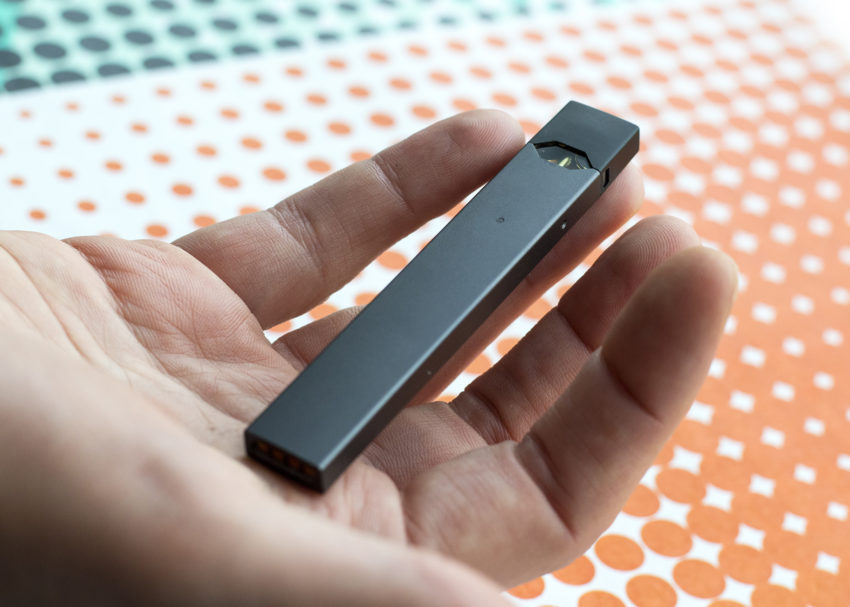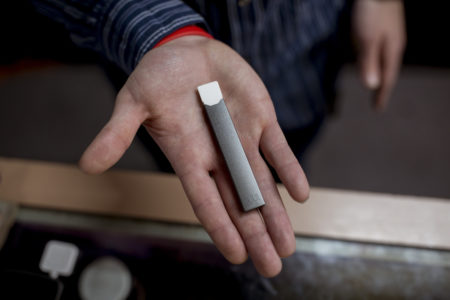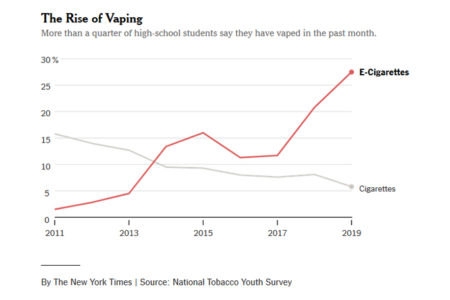
Share On Social!
Mounting health concerns over teen vaping recently led the U.S. Congress to raise the purchasing age for all tobacco products—including e-cigarettes—from 18 to 21.
Now a national ban on many flavored e-cigarette products went into effect on Feb. 6, 2020.
The ban covers a number of what some health experts call “kid-friendly flavorings,” such as mint and fruit. Still, other flavors, such as menthol and tobacco flavorings, remain legal.
The prohibited products won’t be allowed to return to the market until or unless they get clearance from the Food and Drug Administration. That agency review could take months or years. By May 2020, U.S. e-cigarette companies will have to receive approval from the FDA to determine whether they’re allowed to stay on the market.

A big question is how aggressively the FDA will enforce the ban in the weeks and months after it went into effect.
What Led to the Partial Ban
E-cigarettes have been exceptionally popular with youth, in part due to companies’ aggressive marketing campaigns.
Several types of e-cigarette devices have become widely available over the past 10 years. E-cigarette maker JUUL Labs has been a roaring success in recent years, becoming the fastest startup to reach a valuation of over $10 billion and drawing an FDA crackdown.
Recently CDC, the US Food and Drug Administration (FDA), state and local health departments, and other clinical and public health partners were investigating a national outbreak of e-cigarette or vaping, product use-associated lung injury.
As of Jan. 14, 2020, the number of U.S. deaths from an e-cigarette or vaping product use-associated lung injury has climbed to 60. This includes a 15-year-old teen in Texas. A total of 2,668 vaping-related lung injuries has been reported.
Trump administration officials announced in September that they were concocting such a policy, which came to be known as a “flavor ban,” which eventually came to pass with the new law going into effect.
How Effective is the “Flavor Ban”
Since teens also most often use flavored tobacco products, federal, state, and local regulators and politicians are banning their manufacture and sale.
But even though the ban went into effect on Feb. 6, teenagers will still have access to nicotine vapes because many of the flavored vape products are still available. Thousands of flavored e-liquids are not in pod form, products which are commonly found in vape shops and some convenience stores, are not covered by the ban.
Disposable e-cigarettes, open tank systems, and e-liquids of any flavor, including those mixed in vape shops, will all remain available under the policy.
Erika Sward, a spokeswoman for the American Lung Association, told the Washington Post that “it’s a joke to call it vaping ban at all.”
Hence, many health advocates believe that teens will switch to other products that are still in the market.

According to the latest report from CDC, In 2019, an estimated 53.3% of high school students (8.0 million) and 24.3% of middle school students (2.9 million) reported having ever tried tobacco products.
UN agency report says there is clear evidence e-cigarettes are dangerous, but not that they help smokers quit and WHO report noted that electronic cigarettes are harmful both to users and bystanders exposed to the fumes
Many studies suggested that nicotine and carbon monoxide, both present in e-cigarettes, can decrease oxygen levels and significantly increase the risk of heart-related complications.
A recent study published in the American Journal of Preventive Medicine showed daily e-cigarette users were almost twice as likely to have a heart attack as people who had never vaped.
A recent study from researchers at the University of Pennsylvania Perelman School of Medicine reveals that e-cigarettes change blood vessels after just one use.
With the recent coronavirus outbreak, which can trigger pneumonia and damage lungs, a new study suggested that bacteria found in the lungs becomes more harmful and causes increased inflammation when exposed to e-cigarette vapor
Clearly, there is a critical need for e-cigarette regulation, legislative action, and counter promotion to protect youth, and we need more still regulation and ban on e-cigarettes and vaping devices.
You Can Get Help If You Want to Quit Smoking!
 Quitxt, a smoking cessation program designed specifically to help young adults quit smoking, is available now from Dr. Amelie G. Ramirez, leader of Salud America! and her team at the Institute for Health Promotion Research at UT Health San Antonio.
Quitxt, a smoking cessation program designed specifically to help young adults quit smoking, is available now from Dr. Amelie G. Ramirez, leader of Salud America! and her team at the Institute for Health Promotion Research at UT Health San Antonio.
Quitxt service uses text messages and Facebook Messenger chat to help with motivation to quit, setting a quit date, finding things to do instead of smoking, handling stress, using nicotine replacement if needed, and more.
The program is in both English or Spanish and will help you quit smoking today!
By The Numbers
142
Percent
Expected rise in Latino cancer cases in coming years



